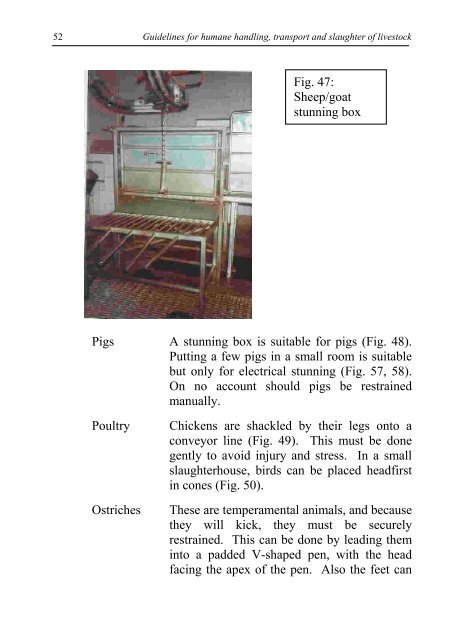Guidelines for humane handling, transport and slaughter of
Guidelines for humane handling, transport and slaughter of
Guidelines for humane handling, transport and slaughter of
You also want an ePaper? Increase the reach of your titles
YUMPU automatically turns print PDFs into web optimized ePapers that Google loves.
52<br />
<strong>Guidelines</strong> <strong>for</strong> <strong>humane</strong> <strong>h<strong>and</strong>ling</strong>, <strong>transport</strong> <strong>and</strong> <strong>slaughter</strong> <strong>of</strong> livestock<br />
Fig. 47:<br />
Sheep/goat<br />
stunning box<br />
Pigs A stunning box is suitable <strong>for</strong> pigs (Fig. 48).<br />
Putting a few pigs in a small room is suitable<br />
but only <strong>for</strong> electrical stunning (Fig. 57, 58).<br />
On no account should pigs be restrained<br />
manually.<br />
Poultry<br />
Ostriches<br />
Chickens are shackled by their legs onto a<br />
conveyor line (Fig. 49). This must be done<br />
gently to avoid injury <strong>and</strong> stress. In a small<br />
<strong>slaughter</strong>house, birds can be placed headfirst<br />
in cones (Fig. 50).<br />
These are temperamental animals, <strong>and</strong> because<br />
they will kick, they must be securely<br />
restrained. This can be done by leading them<br />
into a padded V-shaped pen, with the head<br />
facing the apex <strong>of</strong> the pen. Also the feet can
















